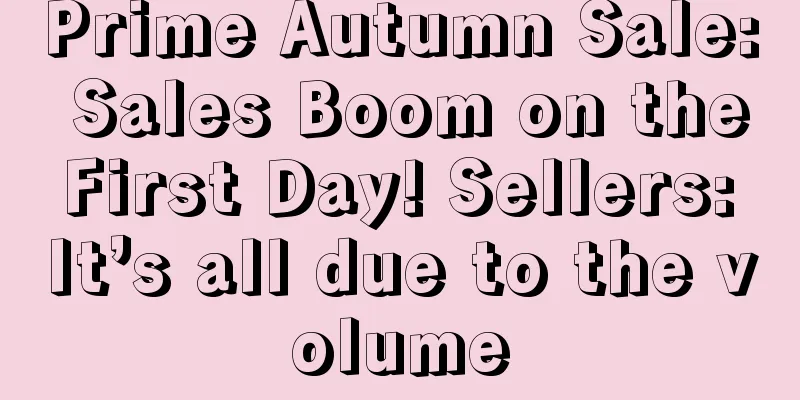|
More and more malicious sellers on Amazon are abusing the system to bring down their competitors; here is a summary of the malicious competition that regular small and medium-sized sellers may encounter and how to deal with it
This is very insidious, because Amazon will not notify other sellers when the product images are changed, which provides an opportunity for bad sellers, and the consequences are very serious. First, manufacturers will constantly change product packaging, so there may be many different packaging on the shelf, but these products all have the same UPC code and the products inside the packaging are also the same. In this case, the best way is to add a description and picture of the product packaging, and strictly follow Amazon's process to complete this step, because Amazon needs relevant evidence Secondly, because different models of a product have the same UPC code, no matter who created the product listing first, other sellers can change the image on the listing and replace it with a different product model. Even if you can restore it through the Seller Central appeal, other sellers can still change it again. To avoid this, you should create listings with different product models, purchase your own UPC codes, or add other models of the product to your listings Finally, another despicable behavior is to replace the product image with a completely different product. However, Amazon keeps a record of every listing change, and if the victim files a complaint, the perpetrator will be punished for violating the rules. Customer reviews are a good way to discover this problem. If there are complaints such as "not as described", "not as advertised" or other similar complaints in the reviews, you should immediately check your listing and temporarily close it until you are sure that your product description is exactly the same as the product you are selling. Check your listing to see if there are other packaging pictures. Examine your listing from the customer's perspective, rather than relying solely on the UPC code. The best way to prevent this conspiracy is to check your negative feedback and reviews and respond immediately, temporarily close your listing, find out the cause of the problem, and if the product image has been drastically changed and it is obviously malicious, do not hesitate to file a violation complaint with Amazon. Negative feedback or malicious slander in buyer information Competitors may deliberately buy your products and leave negative feedback, accusing you of selling fake or defective products. They complain to Amazon and attack you fiercely. In fact, Amazon doesn’t care what they say, but their words will trigger Amazon’s automatic processing system, and you will get a warning or your account will be directly frozen by Amazon. Pay attention to your product reviews and negative feedback, check your reports regularly, respond to negative reviews in a timely manner and take appropriate measures Sometimes unscrupulous sellers will buy the product themselves and then maliciously give bad reviews, which makes it easy to expose their scheme and prevent them from framing you again. However, some sellers will let their friends and family do this for them. In this case, it is very difficult to find the mastermind behind the scenes. Goods not received/damaged during transportation/delayed delivery This may be done intentionally by the buyer in order to get the product for free, or it may be done maliciously by the seller in order to frame a competitor who uses MF (Merchant Delivery). If you use MF, you may easily have your account frozen due to performance issues. Many sellers use USPS, and the chance of being framed is higher. If your product is lost during transportation, the chances of getting it back are slim and it is difficult to find out where it was lost. If a customer says they did not receive the product, do not ask them to go to the local courier point to look for it, as this is likely to result in a bad review from the customer. The best thing to do is to refund them immediately. If you are sure the other party is a scammer, do not send them any more products in the future. If you are a MF seller, the loss or damage of products during transportation will have a great impact on your performance indicators. There are only two ways to improve this situation. First, choose a better courier partner. Second, purchase business insurance. Once the product is damaged during transportation, you can get corresponding compensation. However, this is a considerable expense for most sellers, and it will only work within a small probability range. The best solution to this problem is to use FBA. Admittedly, the cost of FBA is higher than that of MF, but in the long run, the seller will not lose profits, and sometimes even gain more profits. In addition, using FBA can save time and energy, and provide opportunities for sellers to handle other matters. In addition, by releasing permissions and allowing Amazon to automatically handle returns/refunds, the business process is streamlined, and customers receive convenient services, which effectively reduces the number of dissatisfied customers, thereby reducing the number of potential negative reviews and improving performance indicators. Every customer inquiry counts against you because any reason that leads to a customer contacting you will cause the order to be considered a "defective order" and the more difficult it is for a customer to return or exchange an item, the higher the chances of you getting sued for the same order. A-to-Z claims, returns, customer emails, and refunds can all be used against you by malicious competitors. Malicious competitors may buy up your inventory in large quantities or even buy out your inventory, and then return a large number or all of it around the return deadline, claiming that the product is inferior. In this way, you may get into trouble for returning too many products or violating the rules, and your inventory may not be used again for a month or more. During the period when your inventory is sold out, malicious sellers are likely to use your listing to resell the product, or sell it on other platforms such as eBay. Products that are not sold within a month will be returned to you due to various quality issues. In this way, they make a profit from the products sold and get back the principal from the products returned to you. Pay attention to large orders of products. If the buyer comes to you for various reasons after 30 days, explain the situation to Amazon. If they apply for a return within 30 days, agree to their request immediately, but don't give up. Tell Amazon that you suspect that bad peers have framed you. If necessary, provide invoices to prove that the products you sold are brand new. Tell Amazon that you are concerned that they treat each returned product of the same product as a separate return case, and ask them to investigate whether the buyer is a third-party seller or someone closely related to a third-party seller. These issues involve sensitive terms such as "large volume returns", "counterfeit products", "defective products", etc., which can easily lead to immediate account freeze, account review, or Amazon automatically generates emails asking you to write an action plan for these issues Amazon likes proactive sellers. If you show them your suspicions, they won’t tell you what they found, but once it is proven that what you say is true, malicious sellers will be warned and punished for manipulating the platform.
|




![[Shopee Market Weekly Report] Shopee Vietnam Station Market Weekly Report for the 4th Week of June 2022](/upload/images/67e6e4169a66e.webp)





